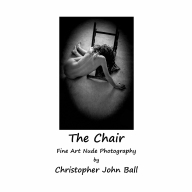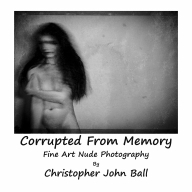|

A
Short Introduction to The Zone System by Christopher John Ball:
The
Zone System is a method of exposing, developing,
and printing monochrome images and is based upon
pre-visualising the subject matter. By pre-visualising I mean thinking
about what you want the final print to look like, before you make
the exposure, and then adjusting exposure and/or development, etc.
in order to create that print as pre-visualised. I am aware that there
are those who have tried to use the Zone System with colour materials,
I feel that the nature of colour materials do not allow for satisfactory
results.
When
discussing the Zone System one has to mention the photographer Ansel
Adams as it is he who is believed to have developed the system in
1941. He used the Zone System extensively within his photography.
Many photographers have used the same methods as Adam's, whilst others
have adapted his techniques to suit their own working practice.
|
The
Zone System |
|
Zone I The darkest black possible for the chosen
paper/film emulsion. |
| Zone
II Not as dark as Zone I but still no visible detail. |
|
Zone III Darkest shadows with details are starting
to appear, e.g. black hair. |
|
Zone IV Medium dark values like brown hair
and blue jeans. |
| Zone
V Middle grey values. Most light meters are set to
give a reading based on zone V |
|
Zone VI Darkest highlight values, such as Caucasian
skin and light hair. |
| Zone
VII Bright values with texture and detail, such as
sand and white/ivory clothes. |
|
Zone VIII Whitest white but still showing details. |
| Zone
IX No details but not as white as Zone X. |
|
Zone X The whitest white possible for the paper/emulsion.
Also known as base white. |
The
N-Development method is a system of exposure/development
and is used to place the important shadow details in Zone III (see
below) and the important highlight details in Zone VII, thus giving
a normal contrast range of 5 stops. The first step is to set the
exposure in such a way as to place the important shadows in Zone
III. This is two stops under mid-grey/Zone V. The film is the processed
according the appropriate N-Development plan as follows. Note that
development times are a general guideline and should be adjusted
according to your individual chemicals, equipment, etc.
N-Development
Table
|
Subject Brightness Range: |
N-Development: |
Development
Time: |
| 3
stops |
N
Plus 2 |
100%
increase |
| 4
stops |
N
Plus 1 |
50%
increase |
| 5
stops |
N
normal time |
As
specified |
| 6
stops |
N
Minus 1 |
20%
decrease |
| 7
stops |
N
Minus 2 |
40%
decrease |
N-Development obviously works best with sheet film
as each sheet can be processed separately. If you are using roll
or 35mm film you can use the above method but it is possible to
expose as instructed above but develop the film normally. Contrast
control can then be adjusted when the print is made.
Many photographers test each camera lens they use,
due to resultant light loss due to transmission factors. One would
have to test each lens used, including any enlarger lenses.
Film is often bought in bulk. The photographer
shooting tests to ascertain the 'actual' film speed rating. Though
a film may have a nominal speed rating of 400 tests may show that
the actual rating varies. I have known films, that after testing,
are really 200. This obviously has an effect on your subject placement.
To test your film a 'Kodak' 18% Grey Card is required. Photograph
this card, making sure the card fills the frame, in balanced/even
lighting. Make an exposure based upon the meter reading and then
make additional exposures using each available aperture. DO NOT
adjust the shutter speed. For example, if the meter suggests an
exposure of 125th of a second at f8 make an exposure then make
additional exposures at f5.6, f4, f2.8, f11, f16 all at 125th
of a second. Develop the film as per instructions.
Contact print, using a 'step wedge' to judge the contact print exposure,
and then check the resultant images, comparing them with the grey
card. Given that most photographic meters are built to give a reading
based upon the 18% grey card, the frame that is nearest in tone
to the card and the exposure used is noted. If the meter reading
suggested 125th second at f8 but the negative nearest in tone to
the card was obtained at f5.6 it can be seen that there is a one
stop difference.
This would suggest that the film should really be rated at 200 when
using that specific equipment combination. Test this by undertaking
another experiment photographing the grey card, this time altering
the meter to suggest that a film of 200 is being used. Again compare
contact print and card. If they match, rate the film at 200. If
not adjust and test again. A 400 film coming in at 200 is an extreme
example. It will often be found that the first test shows that the
nearest equivalent to the grey card is in fact between two negatives
and that further tests are needed. Remember the final result is
only valid with that batch of film used within a specific camera,lens,
enlarger combination.
A
word of advice. Don't get hung up on the zone system. Creativity
is of far greater importance; the zone system is there to be used
as a tool and should not become a hindrance to creativity.
July 2024 Several books, featuring Christopher John Ball's photographs, are now available through Amazon or click on an image below to purchase via secure payments on lulu.com
Return
to Articles Contents
|











